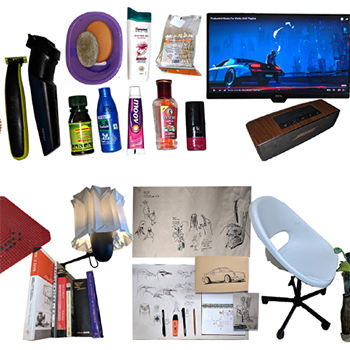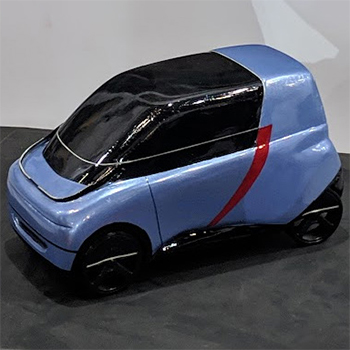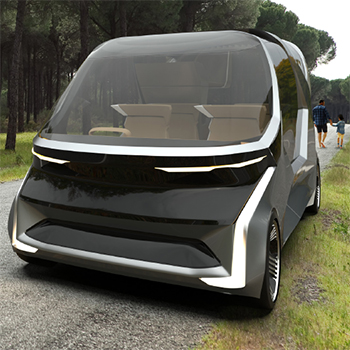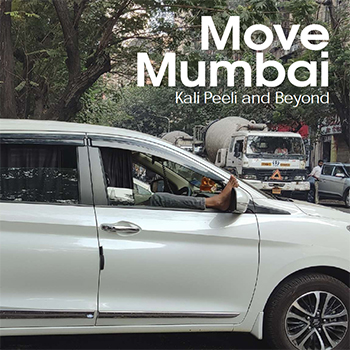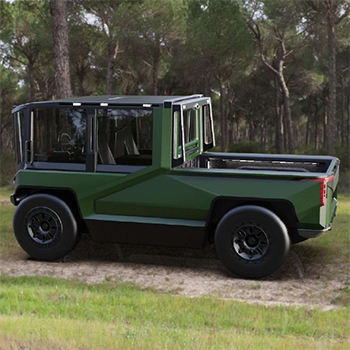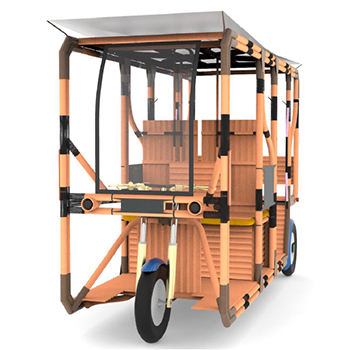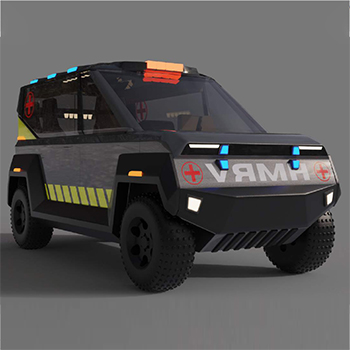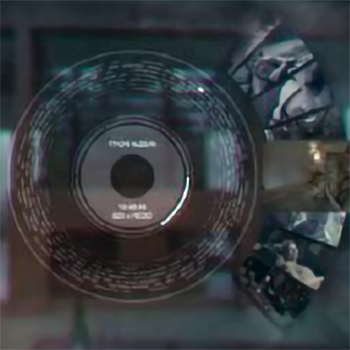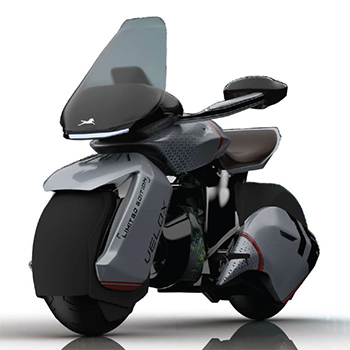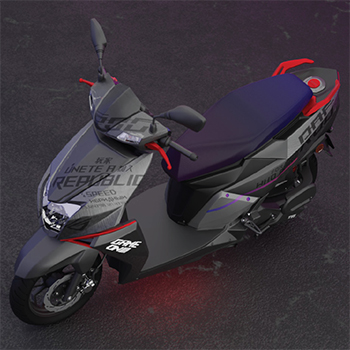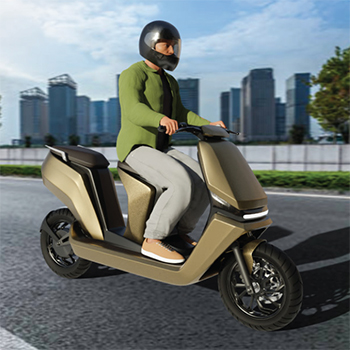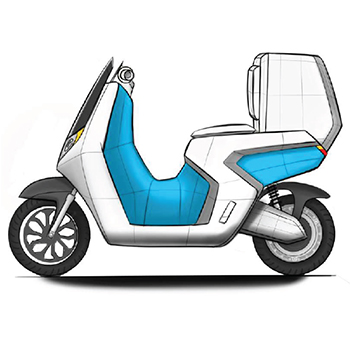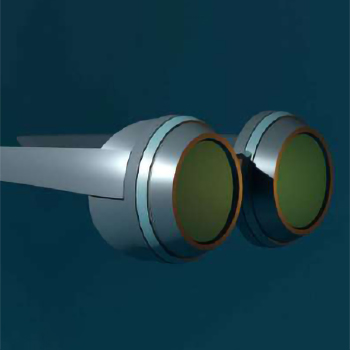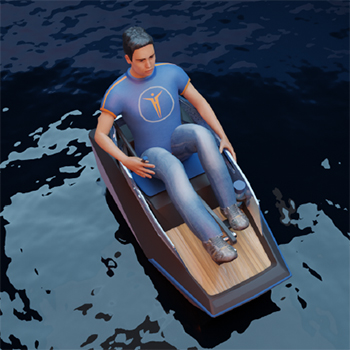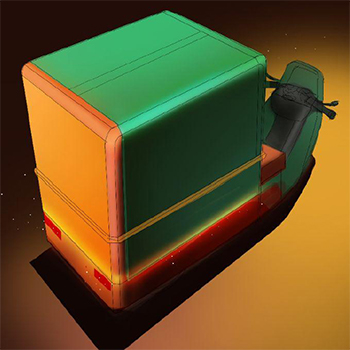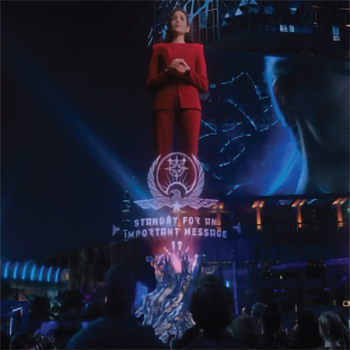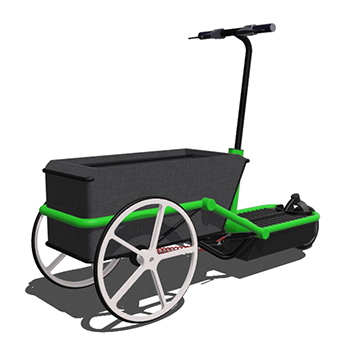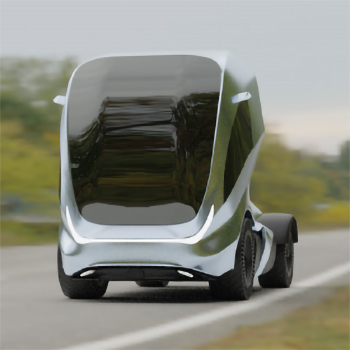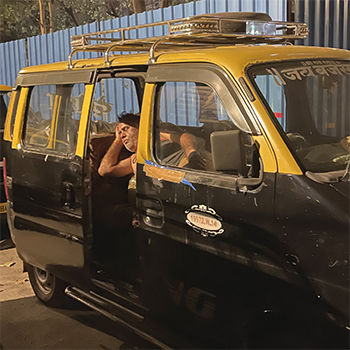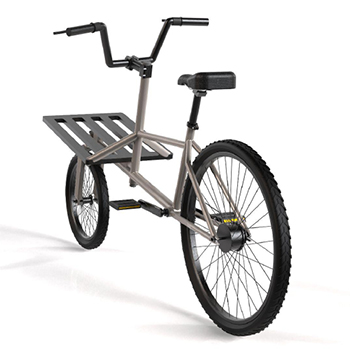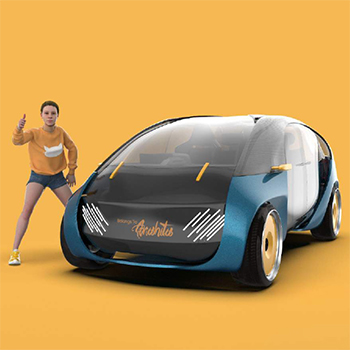M.Des Mobility Design 2019-onwards
2021-2023
(29 items)
How We Live: Through Products We Use
by Akhil Krishna Pradeep
by Akhil Krishna Pradeep
The moment we wake up to the moment we go to sleep, our lives are divided into different phases. One phase is the professional life: where we have to behave in a certain way, we have to use certain kinds of products that are provided to us, and life helps us to meet our needs. The other phase is personal life. This is the phase in a day where it is more about a person’s own choices and wishes. Here a person is free to use whatever product he or she wants to use; there is no boundary here. It may include products for personal care, hobby items, playing with pets, reading books, or going on a hike on a weekend. In these phases, we use various kinds of products, and these products tell a story about us when they come together. Even though the function of the product remains the same, form, aesthetic look, specification, and its property vary. (For example, a main function of soap is to keep our body clean, but the number of soaps that are available in markets varies from shapes, smell, ingredients, and price perspective.) A person selects a certain product due to many reasons; it may be the cost aspect, the aesthetic aspect, previous experience, recommendation, or any random thought to buy it. Each person has their own philosophy of living life. Culture, adaptation of technology, aesthetic sense, hobbies, interest, inspiration, need, wants, and value of beliefs guide a person to choose certain kinds of products. The Design Research Seminar topic “How we live through products we use” mainly revolves around a documentation of these products for a wide range of users. The users may be college-going youngsters or working professionals. The process of telling the personalities and the whole story of a person from the product she/he uses is very interesting and critical for future design interventions and concept generation.
Details >>City Commute Vehicle for Women
by Akhil Krishna Pradeep
by Akhil Krishna Pradeep
Humans use transportation for various purposes, but transportation for daily commutes is arguably the most commonly used one. Every individual uses one or the other types of daily commutes. It may be personal mobility, public transport, vehicle pooling, etc. This project focuses on addressing the issue of audiences preferring personal mobility for their daily commute. The main essence of the project was to design a protector or guardian angel for the primary user group. The idea to design a vehicle that satisfies all user needs by providing a layer of safety and a sense of protection without being too literal was the main key. For this, several ideations based on user inputs were made before finalising a single concept. The project begins with one-to-one interaction with the users who are already using personal mobility or are willing to invest in one. The user's interviews provided various insights, which were converted to product attributes for the final design. The very base of the project was to understand the user requirements when it comes to personal mobility and design a suitable vehicle that satisfies all kinds of their needs, wants, and aspirations to the best possible level. The project also focuses on adding some clever features that users can feel good about in their daily lives. The user research provided an idea for the mindset of such users, and this led to the development of the persona board. The character was painted, and the user's values and personality were developed. Product attributes were solely based on the user insights.
Details >>Fuel Cell Powered Luxury Road trip Vehicle 2040
by Akhil Krishna Pradeep
by Akhil Krishna Pradeep
This vehicle design project delves into the exploration of hydrogen fuel cell technology, the Indian Golden Quadrilateral road network, and the realm of future smart vehicles. The project embarks on a comprehensive analysis utilising the PESTLE framework to assess the political, economic, social, technological, legal, and environmental factors that impact these domains. Informed by expert opinions and insights, a series of scenarios are crafted to envision the possibilities and potentials of the future transportation landscape. The focal point of this endeavour is the development of a vehicle concept that caters specifically to the needs and desires of a family consisting of four members, aiming to provide them with a transformative and exclusive experience reminiscent of a private jet's ambiance. The resultant vehicle concept materialises as a high-speed road trip vehicle propelled by hydrogen fuel cells. Embracing this clean and sustainable energy source aligns with the mounting emphasis on eco-friendly transportation solutions. Moreover, the vehicle design prioritises spaciousness, ensuring ample interior room to guarantee utmost comfort and relaxation for passengers during their journeys. At the heart of this vehicle concept lies the notion of re-energising the users, seamlessly blending cutting-edge technology with luxurious features. The interior environment is thoughtfully crafted to emanate a premium and inviting atmosphere akin to that of a private jet. Every aspect of the design is meticulously considered to deliver an unrivalled level of comfort and sophistication.
Details >>Move Mumbai
Kali Peeli and Beyond
by Angshuman Das
by Angshuman Das
“Move Mumbai” is an incredulous yet everyday traffic story from the streets of Mumbai captured through a series of photographs. We closely observe how Mumbaikars use their vehicles and live with and around them. These vehicles technically are nothing more than machines that were meant to be utilised for transporting people or cargo from place to place. However, these machines become a part of people’s lifestyles, intertwined into their ways of living. At its core, mobility is about people and their needs. This human dimension of mobility is captured through our visual essay. Humans adapt to what is around them in their environment; they tend to make the best out of every opportunity and in the process develop unique traits and habits. People tend to ease their everyday lives by utilising every resource at their disposal. These adaptations to the circumstances present interesting sights around Mumbai, where the street environment is filled with vehicles of all kinds. From cab drivers to bus passengers, from goods carriers to bikers, to children and pedestrians, Mumbaikars encounter hundreds of vehicles daily while commuting between any two places, whether they may or may not be in one themselves. The way people move through their environment is shaped by a wide variety of personal preferences, physical abilities, cultural norms, and socioeconomic status. It could be a matter of necessity for some or a source of leisure for others. It is this diverse human experience that makes every human-vehicle interaction unique.
Details >>Amphibious Wildlife Rescue Vehicle for Kaziranga National Park
by Angshuman Das
by Angshuman Das
Kaziranga National Park and Tiger Reserve (KNPTR) is a World Heritage Site that is home to a large diversity of flora and fauna. The park is known for its large population of animals, which is a result of the wildlife conservation initiatives that take place there. Owing to these conservation activities, the park has successfully managed to grow the population of the endangered species of one-horned rhinoceros, which accounts for 2/3rd of the entire world population of the species. With a large population of species and a large variety of them comes the challenge of a diverse range of rescue operations that need to be deployed across its 1085 sq. km. throughout the year. Birds, reptiles, and mammals of all sizes have to be rescued from difficult terrains and situations and require specialised sets of operations and equipment to complete the rescues effectively and efficiently, minimising the harm to both the animals and the humans involved. Flood is the backbone of productivity of the ecosystem in KNPTR. Annual floods replenish nutrients by redistributing fish and plants. The flood maintains the habitat and prevents the grasslands from turning into woodlands, which is critical for the species that exist there. The flora and fauna of the park are water-dependent. Mud is also critical since the megafauna, including the one-horned rhinoceros and wild buffaloes, use mud for heat exchange since they don't have sweat glands. Currently, the park is closed to tourists, and it remains closed typically from May to September due to floods and their aftereffects.
Details >> Designing and Building A Bamboo E-Rickshaw
by Arka Hazra
by Arka Hazra
Last-mile travel is that part of a journey that involves the movement of goods or people from a certain point of a journey to their final destination. It is the last part of the travel where it is difficult for the primary mode of transport to reach the drop-off location. The package can range from goods to living passengers. In India, the last mile travel has predominantly been man-pulled rickshaws and fossil fuel-based motor vehicles such as rickshaws, taxis, minivans, and trucks. These vehicles are very convenient and practical, but the only drawback is that they pollute the environment. So, to put a check on the pollution levels, a switch is slowly being made from fossil fuel-based vehicles to electric vehicles; in this case, that go-to vehicle is an e-rickshaw. The market for e-rickshaws in India is very limited and is only restricted to local brands and companies, with one option from Mahindra that is meant to transport passengers. These small companies source components from Indian and foreign-origin vendors, assemble them, and sell them via a dealership network. One prominent issue with these vehicles is that they don’t have any standardisation or regulation guiding their manufacturing. The only regulation it has is the I-CAT regulations. Which simply states the overall dimension and speed limit of the vehicle. This is perhaps to bring them under the government’s radar, as they were being illegally imported as components and parts from China at a very cheap rate. The primary focus of this project is to create a local alternative that is easy to manufacture, sustainable, and green and can generate employment. The project focuses on designing a vehicle that can be adapted for multiple use cases, prototyping, building testing, and refining a full-scale working prototype using bamboo as the primary structural material.
Details >>Parcel movement system
by Arka Hazra
by Arka Hazra
Material movement systems are essential for the efficient and effective flow of materials in manufacturing, warehousing, and distribution. These systems can be manual or automated, and they can be used to move materials over short or long distances. The design and implementation of a material movement system should take into account the specific needs of the organisation, such as the type of materials being moved, the volume of materials being moved, and the desired level of automation. This project focuses on the key concepts of material movement systems, the different types of material handling equipment (manual/automated), material flow, material storage, and control, and the factors to consider when designing and implementing such a system. This project will also provide some examples of how material movement systems can be used to improve efficiency and productivity in manufacturing, warehousing, and distribution. The primary aim is to come up with a system-level design and a vehicle that supports the movement of material in both inbound and outbound logistics. For exploratory purposes, I have chosen to design several systems for Amazon.
Details >>Door to door milk delivery vehicle for rural/suburban regions
by Manan Sharma
by Manan Sharma
India, as a country, is the highest milk producer in the entire world, with as much as 22% of the global supply coming from India. As a result, the dairy industry contributes 5% to the national economy, and the sector provides employment to millions throughout India. Being the highest consumer of milk, most of the milk production is used internally, with a small amount being exported to other nations. But how is this milk delivered to the consumer? While bakeries, industries, and factories receive their milk through freight, a large portion of rural and sub-urban households in north and north-western India receive fresh milk daily, delivered on 2-wheelers early morning, right from the source, the dairy farm itself. Freshmilk delivery on 2-wheelers has been a popular profession among small dairy farmers. Being an unregulated business, the vehicles used by the dairy farmers are unsuitable for the purpose, often creating a safety hazard for the farmer as well as other road users as well. Through this project, I aim to understand these problems, the user, their needs and aspirations, and create a purpose-made vehicle for door-to-door fresh milk delivery for the North Western, with Uttarakhand chosen as the domain for context research.
Details >>First responder medical rescue vehicle for extreme cold climatic conditions
by Manan Sharma
by Manan Sharma
Over 53 million people reside in the high-altitude Himalayan regions of North India, which are a fascinating and awe-inspiring part of the country's diverse landscape. Nestled amidst the mighty Himalayas, these regions boast breathtaking beauty, rich cultural heritage, and an environment that is both challenging and rewarding. However, it is important to note that these areas also face unique challenges such as limited transportation and limited access to resources. The relief map of India (Image 1.1) shows the high-altitude areas of Northern India. For the sake of this project, areas over 2500 m altitude were considered for research. Due to the rugged terrain and extreme weather conditions, transportation infrastructure in these high-altitude regions is often limited and challenging. Many remote villages and towns are only accessible by treacherous mountain roads or even by foot. This lack of transportation can make it difficult for residents and visitors to travel, resulting in limited connectivity and logistical challenges. One of the significant challenges is the lack of adequate medical and rescue services, further compounded by the difficulty in accessing them. The remote and rugged terrain makes it challenging for emergency medical services to reach remote villages and trekking routes promptly. The scarcity of healthcare facilities, trained medical personnel, and emergency response infrastructure poses a risk to both local communities and adventurous travelers. In cases of accidents or medical emergencies, the limited availability of rescue services and the time required to transport patients to lower altitudes for proper medical attention can significantly impact the chances of survival and successful treatment. This situation underscores the importance of thorough preparation, caution, and ensuring the availability of proper medical supplies when venturing into these high-altitude regions.
Details >>Future Gadgets as seen through science fiction shows - Human Machine interactions (HMI)
by Manish Sharma
by Manish Sharma
Technology and innovation have always been influenced by science fiction. Science fiction shows have frequently presented us with new ideas that have later become realities, from means of communication to modes of transportation. This project aims to explore the various futuristic gadgets and human-machine interfaces (HMIs) that have been portrayed in science fiction shows over the years and examine their potential for real-world applications. By analysing the depictions of these devices and interfaces in popular shows like Black Mirror, Westworld, Altered Carbon, etc., this project seeks to identify the technologies that are likely to be developed in the near future. It will examine how these gadgets and HMIs can be used to improve our daily lives, enhance our communication capabilities, and provide us with more efficient ways to interact with technology. Through this project, we hope to document and inspire new ideas for technology development and explore the ways in which science fiction can influence and shape our future.
Details >>Border Patrol Vehicle for BSF
by Manish Sharma
by Manish Sharma
The Border Security Force (BSF) is a border guarding force of the Government of India. Established on December 1, 1965, it is one of the Central Armed Police Forces. Its primary role is to guard India's international borders during peacetime and also prevent trans-border crime. Like all Central Armed Police Forces of India, the BSF is under the administrative control of the Ministry of Home Affairs. It is one of the many law enforcement agencies of India. With a strength of 240,000 personnel in 186 battalions, including women personnel, it is one of the world's largest border patrol forces. Different types of unexpected situations may occur at the border—peacetime, less than the wartime. To manage the situations arising at borders effectively, a group of people, mainly the military or the police, are under the duty to keep a watch over the area at regular intervals of time to corroborate peace and safety. India follows the principle of ‘One Border, One BorderGuardian Force'. In the context of this principle, the burden of the India-Pakistan, and India-Bangladesh border is under the hands of the Border Security Force (BSF), Assam Rifles (AR) for the India-Malaysian border, and Indo-Tibetan border police for the India-China border. Nepal and Bhutan’s border is overlooked by Sahsastra Seema Bal (SSB).
Details >>Premium Luxury Mobility for 2040, that celebrates Sustainability
by Manish Sharma
by Manish Sharma
This design project envisions a future in 2040 where luxury two-wheelers celebrate sustainability and contribute to a carbon-neutral world. Recognising the urgent need to address climate change, the project focuses on creating a new generation of high-end two-wheelers that merge opulence and environmental consciousness. These luxury two-wheelers embrace cutting-edge technologies, including lightweight materials like advanced carbon composites and bio-based polymers, resulting in reduced energy consumption and carbon emissions throughout the product life cycle. Beyond performance and sustainability, the design places a strong emphasis on aesthetics and user experience, ensuring that luxury and comfort are not compromised. By envisioning and actualising these sustainable luxury two-wheelers, this project aims to inspire a paradigm shift in the industry, promoting a future where environmentally responsible transportation coexists harmoniously with opulence and style.
Details >>Future Gadgets as seen through Science Fiction Movies
by Mohammed Jaseel
by Mohammed Jaseel
The world of science fiction movies has always been a source of inspiration for technologists and futurists. These movies have given us a glimpse into a world where technology has advanced beyond our wildest dreams and futuristic gadgets and devices are commonplace. From hoverboards and virtual reality systems to intelligent robots and advanced spacecraft, science fiction movies have portrayed a wide variety of futuristic gadgets that have captured the imagination of audiences around the world. This Design Exploration Project titled “Future Gadgets as Seen Through Science Fiction Movies” aims to explore the most iconic and innovative gadgets portrayed in science fiction movies and examine their impact on popular culture and technological advancements. We will analyse how these futuristic gadgets are depicted in movies, their functionality, and the impact they have on the characters and the story. We will also delve into the real-world technologies that have been inspired by these gadgets and how they have contributed to the advancement of science and technology. Through this project, we hope to gain a better understanding of how science fiction movies are influencing our ideas about the future and shaped the world of technology and innovation.
Details >>Summer Internship at Foley Designs
by Mohammed Jaseel
by Mohammed Jaseel
Foley Designs Pvt Ltd. is a Bengaluru-based multi-disciplinary design studio founded in 2006 by industrial designer Michael Foley. Foley Designs is known for its innovative thinking processes, zeal for design, originality of thought, and the ability to use market and consumer understanding to create new benchmarks in design. Every design at the studio revolves around a mark of inventive thinking.
Details >>Designing a vehicle for Bike Taxi services in India
by Mohammed Jaseel
by Mohammed Jaseel
The bike taxi is a motorised taxi that carries one passenger as a pillion behind the driver. These taxis are motor vehicles used to carry passengers for hire. These vehicles require a legal contract or permit for usage as contract carriage. They are available for the general public and usually lack regular routes, fixed timings, and fixed stations. A passenger can book or hail a bike taxi ride with the help of a smartphone application or website using the internet. Passengers can book or hire a bike taxi for a decided route, which would be pre-defined by the passenger. In the last few years, a few companies have come up in multiple cities in India providing bike taxi services. With the Central Government’s rule of allowing two-wheelers as legal and commercial vehicles and 8 states already legalising the same, it has become easier for the companies to design a working framework to provide an easy and comfortable commute to the people. Key players operating in the India bike taxi market include Baxi, Bikxie, Desto-Bike Taxi, Dunzo, Jugnoo, Mopedo, Ola, PykUpz, Rapido, and Uber Technologies, Inc.
Details >>Fashion Inspired Personal Mobility for a Future Urban Scenario
by Mohammed Jaseel
by Mohammed Jaseel
This project explores the concept of redefining personal mobility as a fashion accessory in the future. It delves into the intersection of fashion and transportation, examining how style and self-expression can play an integral role in the design of mobility solutions. The report discusses the importance of fashion in society, its historical significance, and its evolving trends. It also highlights the current status and future prospects of personal mobility, including modes such as motorcycles, cars, bicycles, and emerging trends in compact electric vehicles. The project further explores how fashion and style will become an essential aspect of personal mobility in the future, considering the evolving needs and desires of consumers. It examines the potential collaborations between mobility and fashion brands, showcasing how partnerships can result in innovative and stylish transportation solutions. Additionally, the project discusses the concept of hyperpersonalization in products and services, envisioning a future where individuals can customise and personalise their mobility choices to reflect their unique style and preferences.
Details >>Two Wheeler Vehicle Design for Delivery Personnel
by Prateek Pagore
by Prateek Pagore
The availability of cheap, quick Internet and the widespread use of smartphones are both contributing to the rapid growth of India's e-commerce industry. There are numerous delivery strategies now, thanks to India's booming e-commerce industry. With the help of third-party delivery service providers like Delhivery, E-Kart, etc., last-mile delivery is now possible. E-commerce, which was pioneered by Amazon in 1995, has been expanding steadily since. With more than 500 million people online and access to fast, low-cost Internet, as well as the prevalence of reasonably priced smartphones and government initiatives like "Digital India" and "Startup India," Indian e-commerce has seen steady growth since 2014, and the Indian retail market is among the top five in the world and one of the fastest growing, with reports suggesting that it will grow to $1 trillion by 2025 (“India expected to become the second largest eCommerce market: LS Digital Report,” 2022). The provision of online shopping has accelerated the expansion of the gig economy sector in India. With such a rapid growth of eCommerce companies that sell products online, there is huge pressure on the delivery service providers to deliver these products to the customers on time and in good shape. Last-mile delivery service is largely dependent on two-wheelers for delivering packages. At present, young adults in the age range of the early 20s to mid-30s are employed to deliver these products and parcels. They are employed by third-party vendors or online shopping platforms directly and paid for every parcel or product delivered. They use their own personal vehicle to perform the deliveries; these vehicles are designed to transport people and not packages in particular.
Details >>Mobile Home for Indian Youth
by Prateek Pagore
by Prateek Pagore
Van life refers to a lifestyle where people live in converted vans or recreational vehicles (RVs) and travel full-time or part-time, often in search of adventure, freedom, and a simpler way of living. The history of van life dates back to the 1960s and 1970s, when the counterculture movement gained popularity in the United States. During this time, many young people sought to break away from mainstream society and live a more alternative lifestyle. One way they did this was by converting vans and buses into mobile homes and travelling across the country. This was often referred to as “hippie van life” and was characterised by a sense of freedom, self-expression, and community. As the years went by, van life continued to evolve and adapt to changing times. In the 1980s and 1990s, van life became popular among surfers, who used vans as a way to travel to different beaches and catch waves. During this time, there was also a growing interest in minimalism and sustainable living, which inspired many people to downsize their homes and live more simply. In the 2000s and 2010s, van life experienced a resurgence in popularity as social media platforms like Instagram and YouTube gave people a way to document and share their travels and experiences. This led to a new generation of van lifers who embraced technology and used it to connect with others in the community.
Details >>Glasses for Colourblind
by Pratik Bansode
by Pratik Bansode
“Glasses for Colorblind” is a design research project by Pratik Bansode (Batch 2021-2023) at IDC, IIT Bombay, under the supervision of Prof. Nishant Sharma. It's classified under mobility design and investigates assistive eyewear technology aimed at helping people with color blindness better distinguish colors. The work includes the technical design of the glasses, the working of octopus eyes, the mechanism, explorations, etc. The project is rooted in exploring ways design can enhance perceptual accessibility for color-blind individuals.
Details >>Compact Human-powered Watercraft
by Pratik Bansode
by Pratik Bansode
The design project aims to address the limitations of current watercraft used for eco-tourism in mangrove forests. The challenge is to create a compact, manually operated watercraft that can manoeuvre through shallow waters and dense mangrove areas, allowing tourists to explore these unique environments more efficiently. The proposed watercraft should have a smaller footprint and stable design to navigate around obstacles like rocks and roots. It should also be easy to operate, ensuring a minimal learning curve for users. With the ability to be used during both low and high tides, this innovative watercraft aims to enhance the eco-tourism experience, providing visitors with a closer and more immersive encounter with the diverse wildlife and beauty of mangrove forests.
Details >>Cafe on Wheels
by Pratik Bansode
by Pratik Bansode
The objective of this design project is to create an inviting and functional café food truck, offering customers a delightful culinary experience on wheels. The food truck will focus on serving high-quality coffee and delectable snacks, providing a welcoming space for customers to enjoy their treats on-site or take them away conveniently. Key goals include designing an optimised layout for efficient operations, ensuring versatility in the menu to cater to diverse tastes and dietary preferences, and incorporating sustainable practices such as eco-friendly packaging and waste management. The mobile café will comply with local regulations for easy mobility and accessibility to various locations and events. The overall vision is to create a memorable and sustainable mobile café experience, promoting environmental consciousness and customer satisfaction.
Details >>Mobile Vegetable and Fruit Vending Cart
by Praveen Kumar
by Praveen Kumar
According to a study, about 81% of the Indian workforce is in the informal sector, 6.5% is in the formal sector, and about 0.8% is in the household sector. There are around 50 lakh street vendors in India, of which Uttar Pradesh has the most (8.5 lakh). Uttar Pradesh is also in the category of states with large populations of street vendors. Other states with a high number of street vendors include Maharashtra and Telangana (5 lakh), while Gujarat and Tamil Nadu have (3.5 lakh) of labor. (TribuneIndia 2022) The number of jobs in India is decreasing, which means there are more informal (unregulated) sectors where people work. This can cause many problems because it doesn't always provide the same benefits and protections as regular, formal jobs. A study has found that the informal sector is the main source of job growth in India, and it needs to be considered when planning for the future.
Details >>Women Inclusive Design For Riot Control Vehicle
by Praveen Kumar
by Praveen Kumar
In riot control operations, ensuring female staff’s safety and equality is crucial. Based on pertinent information and insights, this research analyses design factors for riot control vehicles that specifically respond to the demands of female workers. These vehicles seek to improve the efficiency, comfort, and safety of female front-line workers by analysing the difficulties experienced by women in riot control scenarios and implementing gender-sensitive characteristics. The importance of offering safe and comfortable seating, adaptable safety equipment, and enhanced visibility from inside the vehicle is highlighted in this paper. It emphasises the significance of lightweight yet sturdy construction materials to facilitate ease of operation for female staff. The findings of this report aim to inform the development of riot control vehicles that prioritise the well-being and effectiveness of women personnel, ultimately contributing to a more inclusive and effective response to civil unrest.
Details >>Future gadgets as seen through Science fiction Series
by Rahul R
by Rahul R
More than 300 years in the future, society has been transformed by new technology, leading to human bodies being interchangeable and death no longer being permanent. Takeshi Kovacs is the only surviving soldier of a group of elite interstellar warriors who were defeated in an uprising against the new world order. His mind was imprisoned for centuries until impossibly wealthy businessman Laurens Bancroft offers him the chance to live again. Kovacs will have to do something for Bancroft, though, if he wants to be resurrected. Bancroft’s request of Kovacs is to solve a murder—Bancroft’s. “Altered Carbon” is based on Richard K. Morgan's cyberpunk noir novel of the same name. Alter Carbon is a science-fiction television series set in a distant future where technology has advanced significantly. In this world, gadgets and technology play a crucial role in society, and many devices have become essential to everyday life. One of the most significant advancements in technology in the world of Alter Carbon is the ability to transfer human consciousness into new bodies, or “sleeves.” This has led to a society where people can effectively live forever by transferring their consciousness into new bodies as their old ones age or wear out.
Details >>Modular Vehicle for Street Vendor
by Rahul R
by Rahul R
The street vendors are people who sell essential grocery items and goods. They are contributors to the economy, society, and culture of our cities. Street vendors may be stationary in the sense that they occupy space on the pavements or other public/private spaces, or they may be mobile in the sense that they move from place to place by carrying their wares on push carts or in baskets on their heads. Street vendors provide tremendous contributions to the economy, society, and culture of our cities. Despite this, the issue of recognising and regulating street vending is one of the most intractable issues in cities. They might do various sorts of business in a single day, so he/she might transform the vehicle accordingly. Street vendors have been in existence since ancient times. In all civilisations, ancient and mediaeval, one reads accounts of travelling merchants who not only sold their wares in the town by going from house to house, but they also traded in neighbouring countries. The Indian Institute for Human Settlements (IIHS), in partnership with the Hungry Cities Project, surveyed 1000 food vendors across Bengaluru. Results revealed that about 47% of vendors were mobile food vendors operating out of a mobile cart, cycle, or bike, and 18% of food vendors would sell their items in multiple locations in the city.
Details >>Longhaul EV Truck for India in 2040
by Rahul R
by Rahul R
Truck drivers in India play a crucial role in the country’s transportation industry, ensuring the smooth movement of goods across vast distances. They are the lifeline of the Indian economy, facilitating the distribution of essential commodities, raw materials, and finished products to various corners of the nation. These dedicated individuals endure long hours on the road, braving challenging conditions and unpredictable terrains to deliver goods on time. They often embark on journeys that span thousands of kilometers, connecting rural areas to urban centers and facilitating interstate trade. The automobile business has undergone incredible changes throughout the years, and as we look to the future, it is critical to anticipate the wants and requirements of particular geographic areas. In this article, we examine truck design with a particular emphasis on India in 2040. India’s fast expanding economy, expanding population, and changing infrastructure present the transportation industry with both distinct difficulties and opportunities. The purpose of this report is to examine the important factors and design elements that will influence Indian trucks in the future. Our goal is to offer truck manufacturers, legislators, and other stakeholders in the transportation sector insights and recommendations by analyzing the anticipated socioeconomic, environmental, and technological developments.
Details >>Move Mumbai
Kali Peeli and Beyond
by Tekhengutso Therieh
by Tekhengutso Therieh
“Move Mumbai” is an incredulous yet everyday traffic story from the streets of Mumbai captured through a series of photographs. We closely observe how Mumbaikars use their vehicles and live with and around them. These vehicles technically are nothing more than machines that were meant to be utilised for transporting people or cargo from place to place. However, these machines become a part of people’s lifestyles, intertwined into their ways of living. At its core, mobility is about people and their needs. This human dimension of mobility is captured through our visual essay. Humans adapt to what is around them in their environment; they tend to make the best out of every opportunity and in the process develop unique traits and habits. People tend to ease their everyday lives by utilising every resource at their disposal. These adaptations to the circumstances present interesting sights around Mumbai, where the street environment is filled with vehicles of all kinds. From cab drivers to bus passengers, from goods carriers to bikers, to children and pedestrians, Mumbaikars encounter hundreds of vehicles daily while commuting between any two places, whether they may or may not be in one themselves. The way people move through their environment is shaped by a wide variety of personal preferences, physical abilities, cultural norms, and socioeconomic status. It could be a matter of necessity for some or a source of leisure for others. It is this diverse human experience that makes every human-vehicle interaction unique.
Details >>Compact cargo bike for Indian market
by Tekhengutso Therieh
by Tekhengutso Therieh
Most of the cargo bicycles or tricycles that exist in the Indian market are for commercial purposes (or are viewed to be for commercial use). With the increase in the environment and health concerns, many individuals started cycling; cycling for running errands or going to work has now become more prevalent. Here is where the need for a cycle that is practical enough to carry an individual and their belongings with ease is needed. This project is not only limited to the bicycle segment but also to the tricycle segment. And will try to solve the issue with a novel solution with respect to the Indian consumers.
Details >>Design a Police Patrol vehicle for India
by Tekhengutso Therieh
by Tekhengutso Therieh
The police force plays an important role in ensuring a safe and peaceful environment for the citizens by enforcing law and order. The police force performs various tasks, like patrolling, crowd control, crime prevention, and investigation. Thus, it requires them to move around frequently; they have to cover the entire jurisdiction as efficiently and quickly as possible. This is where the requirement for the right mobility device is required for this purpose; therefore, it is important that the mobility devices are designed and developed based on their requirements that can ease and assist in performing their duty. This project will look into the police patrolling vehicles, the duties performed in patrolling, the vehicles used in patrolling, and the factors that are responsible for performing this task.
Details >>P3 Project
(1 items)
Personalized Subscription-Based Mobility for India in 2040
by Angshuman Das
by Angshuman Das
This project is a speculative design work where the researcher aims to design a commuting vehicle for working professionals in India in 2040. The researcher first establishes a scenario for India in 2040 by following a speculative future research methodology and the help of industry experts who have been working in the automotive design industry for more than 10 years. Mobility in Indian megacities, such as Mumbai, presents a unique human-centred design problem for public-interest sociotechnical systems. First, India is characterised under the medium-human development index category in the United Nations Development Index. This means that a large number of people lie at the base of the economic pyramid. Despite this fact, at the same time, a handful of Indians also lie at the apex of the pyramid. Thus, in spite of the economic range that Indians fall into, everyone travels for their day-to-day activities, making urban mobility as a public-interest technology a major challenge for human-centred designers in India. Second, India as a nation is undergoing a massive wave of urbanisation due to internal migration towards the mega-cities, such as Mumbai, resulting in an increase in human density in concentrated regions. As a result, there is a growing need for mobility systems in cities for rapid urban transit. These mobility systems imply not only mass-rapid transit but also personal mobility.
Details >>